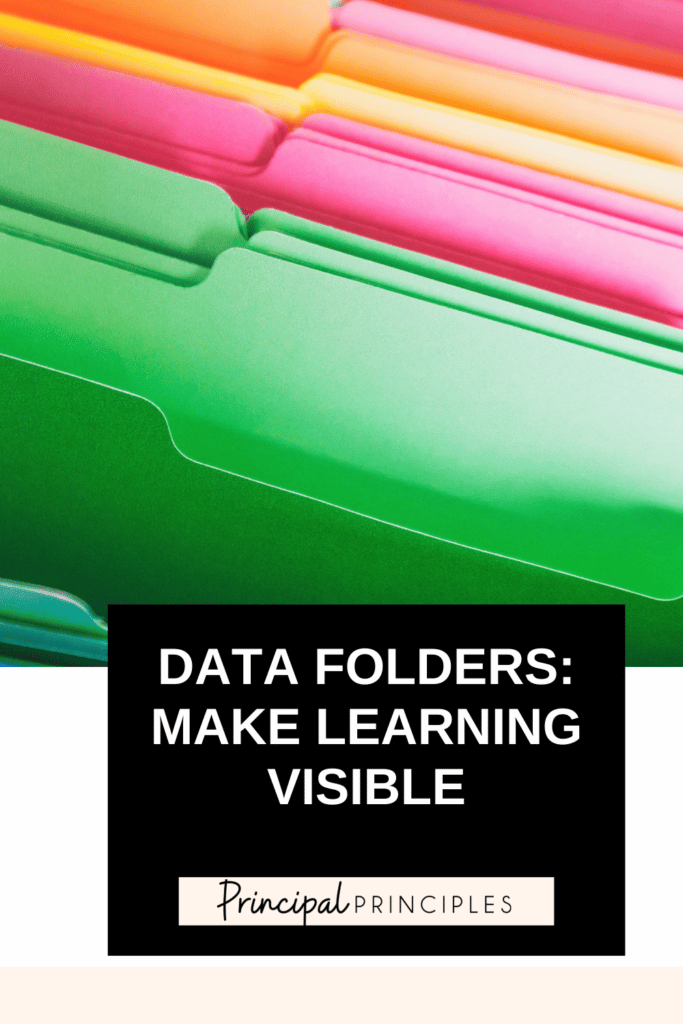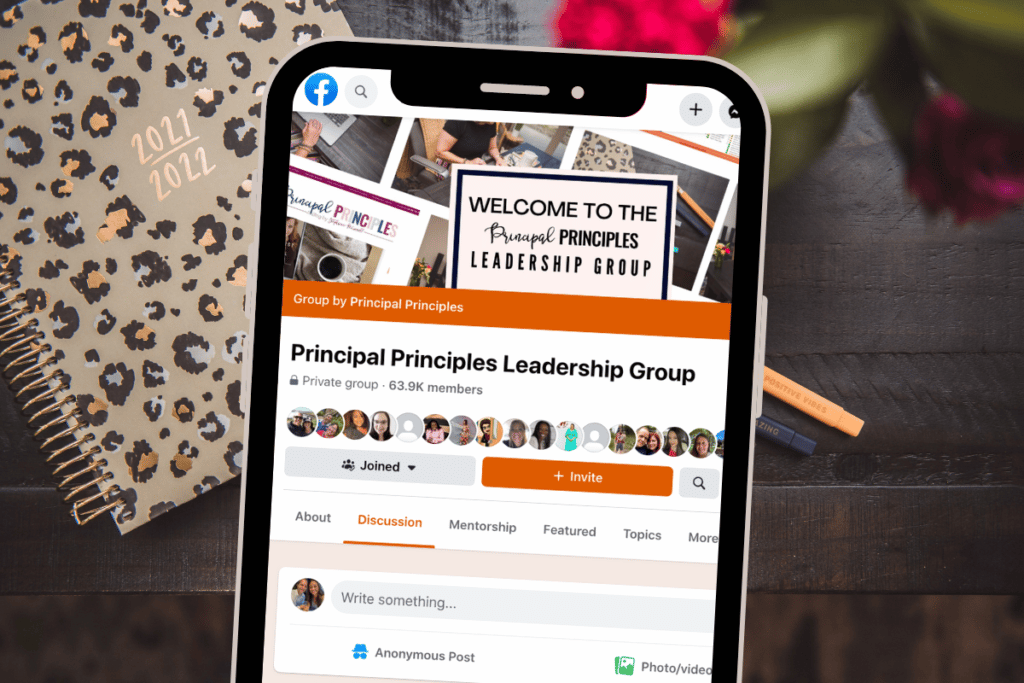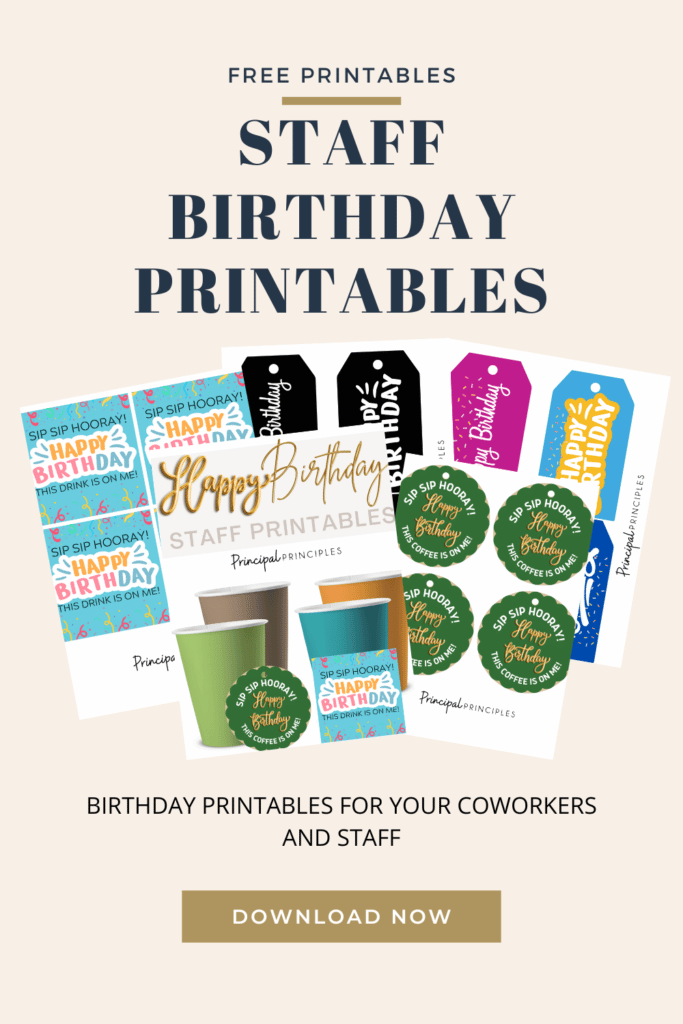

If you haven’t started using student data folders, it is a tool I highly suggest. These folders are in the hands of the students. They’re tracking and monitoring their own data. Teachers debrief with students after checkpoints and have critical conversations about their growth. Students recognize areas of their own strengths and areas to improve. The folders are the used to transform small group instruction that is designed specifically for their needs.
Data is useless until it impacts the instruction.
If the idea of using data folders sparks your interest after reading this post, I highly recommend the book by John Hattie- Visible Learning for Teachers.
The folders will stay with the teachers and not in the desks, lockers, etc… Since we are departmentalized and change classes, we decided to have one folder for the reading/ELA teacher and one folder for the math teacher. Remember, we decided to begin small and work on reading and math at this time. The file folders are the very inexpensive manilla office folders. Next year, I plan on making this a school-wide goal as I have always done in my previous districts.
Year One: I gave my teachers half-day subs so they could use the time to look over the data and make plans for instruction. This is a lot of information to hand to your teachers. Be understanding of the time that this takes to do it right. Year Two: I asked a former teacher (also a sub) to come up and create these folders since she was a teacher for me last year. She was familiar with the process and used the folders in her classroom.
This is a Study Plan template for students. We simply fill it out or have students fill it out. Then students will use the study plan to complete a set of assignments in Education Galaxy, IXL, or paper-based assignments as determined by on their data. You might even call this a learning plan. At my school we refer to it as a study plan. My school seeks to continually raise expectations, innovate, and amplify student achievement. Personalized learning is the key for which high-quality instruction is delivered. We are all about using data in a purposeful way. As you can see this is not a one size fits all kind of instruction.
The outside of the folders are color-coded (without the labels for confidentiality purposes). The color codes are for the teachers to remember all the special programs a student may be identified under.
Students use the form below to graph all their content-based assessments. The process is very important. Students need that visual to see their growth or areas of weakness.
Our state standards are called TEKS. Students will also graph individual standards for both reading and math. This is how students know what study plan to create. We monitor the standards not being mastered and design as specific plan for them. We want to close the gaps in these standards as quickly as possible. The most effective way to do that is to create a plan that truly identifies their weaknesses. Students also set goals to reach. This is an important piece. We want students to take ownership of their own learning.
I’m going to admit that personalized learning is a hidden jewel. My campus went from a very low accountability rating to an “A” rating in ONE school year! One significant factor is a well-designed RtI system where student data is consistently measured.

I’m Stephanie, and I’m the face behind Principal Principles. I’m a former principal turned educational consultant, presenter, and edupreneur. I’m obsessed with giving school leaders the tools they need to lead a successful school.

Hello friend! Welcome to Principal Principles. I’m Stephanie, and I’m the face behind Principal Principles. I’m a former principal turned educational consultant, presenter, and edupreneur. I’m obsessed with giving school leaders the tools they need to lead a successful school.

Join over 63,000 leaders in our Facebook group! Principal Principles Leadership is a professional learning network for future and current school leaders. We share ideas and resources every day!
A description of what the benefit is of joining your list. Updates, sale notifications, resources?


11 Responses
Any chance you have an editable copy of the, "My Study Plan," form? I like it and want to use it. Thanks
Thank you so much for sharing these resources!
Where can I obtain a copy of the student content assessment graph and TEKS graph?
I would like editable copy of My Study Plan. Is that possible?
Where can I obtain a copy of your content assessment and TEKS graph?
Where can I obtain a copy of the content assessment and TEKS graph mentioned in this post? I would love a copy!
Bardzo polecam zapoznanie się ze stroną http://rytualymilosne24.wordpress.com gdzie możecie znaleźć sporo artykułów i recenzji na temat magii miłosnej i nie tylko. Są tam informacje o skuteczności danych rytuałów.
could you send me a copy of the student data tracking sheet?
Where can I get a copy of the student content assessment graph and TEKS graph?
Every weekend i used to pay a quick visit this web site, because i want enjoyment, for the reason that this this
web page conations really nice funny data too.
Feel free to visit my blog – 오피
(jk)
hey check our service of verify a mobile number for tawakkalna on our worpress website. i recently created this website.